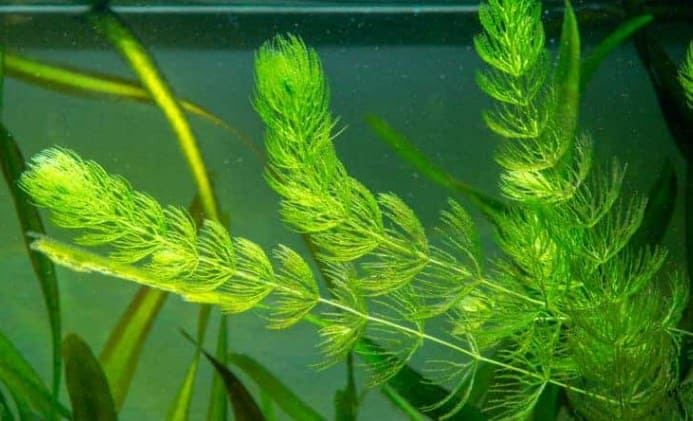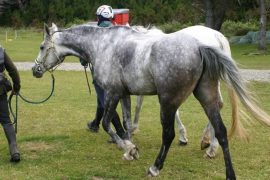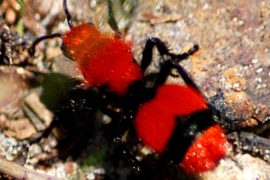If you set up a new aquarium or want to ban algae from your tank, you should use plants that grow as quickly as possible. Due to their rapid growth, the aquarium plants remove excess nutrients from the water and at the same time ensure a good supply of oxygen. In tanks without a filter, fast-growing aquarium plants are also indispensable.
Especially among the stem plants, which are offered in bunches or rooted in pots, there are many species that convince with their fast growth. But even among the rosette and rhizome plants, some representatives convince of a high growth rate. We would like to present a short profile of some aquatic plants for the aquarium, which are among the particularly fast-growing aquarium plants.
Profiles for aquarium plants: fast-growing and easy to care for
False water friend – Gymnocoronis spilanthoides
The “false water lover” is a hardy marsh plant. In the aquarium, she is an undemanding and grateful fosterling. The stem plant can reach a height of more than one meter. In the aquarium, the shoot tips of the false water friend are regularly shortened, which also leads to denser growth. The plant forms roots on the lower leaf bases, which draw excess nutrients from the water. Therefore, it is a popular nutrient consumer and is ideal for initial planting and algae control.
Tip: If you like the plant, you should also take a look at the giant water friend Hygrophila corymbose, also called the cherry leaf plant. We can also particularly recommend this as a fast-growing aquarium plant.
False water friend, Gymnocoronis spilanthoides
Gymnocoronis spilanthoides is a flexible aquarium plant that adapts readily to its surroundings. Beginners get along well with the species from South America, professional aquarists appreciate its decorative appearance.
The light green foliage of Gymnocoronis spilanthoides creates beautiful contrasts in the aquarium, especially in combination with reddish plants. At a height of up to one meter, Gymnocoronis spilanthoides has to be shortened occasionally, otherwise, the shoots will grow above the water surface, which also sets accents. Emers may develop white inflorescences that eventually give rise to seeds.
Purple Parrot Leaf – Alternanthera reineckii rosaefolia or “Pink”
The purple parrot leaf forms a nice contrast to other aquarium plants. Its interesting growth habit and the nicely colored red undersides of the leaves characterize its characteristic appearance. New shoots constantly sprout from the leaf axils – this creates a dense growth. This can also be stimulated by propagating top cuttings, which causes the mother plant to form new side shoots. The parrot leaf loves bright locations. If kept too dark, the spaces between the leaves will increase as the plant attempts to grow rapidly towards the light.
Asian Water Screw – Vallisneria Asiatica
Various Valliserie species can be found in our aquariums and embellish the middle ground and background there. The easy-care and fast-growing aquarium plant is happy about a good supply of light and is otherwise quite undemanding. It prefers harder water and is therefore a popular plant for the perch aquarium. Depending on the species, Vallisneria can reach a considerable length and are therefore also ideal for large tanks. In small pools, they quickly flood in the current. Propagation takes place via subterranean offshoots that can be separated and replanted.
Brazilian Pennywort, Hydrocotyle leucocephala
The Brazilian pennywort is a popular aquarium plant that scores with its versatility:
It can be cultivated both as a flooding plant and planted, with regular pruning it is also suitable for the foreground, can grow climbing around roots and other decorative objects, and can even green a Hamburg mat filter. Floating on the surface, the Brazilian pennywort also makes a good floating plant. It is extremely adaptable and robust and an ideal plant for algae control or for the first time in the aquarium.
Brazilian pennywort – Hydrocotyle leucocephala XL plant
A very undemanding stem plant is the “Brazilian pennywort” Hydrocotyle leucocephala. The Dennerle plant collectors discovered the plant in the shallow water of crystal-clear rivers, but also in the damp underground of the dense jungle. It grows very quickly in the aquarium and is highly recommended for beginners. As soon as the shoots have reached the water surface, they continue to grow in a flooding manner. Due to the rapid growth, the stems often have to be shortened and replanted.
Waterweed – Egeria densa
The lush green plant, which is also native to us, originally comes from South America. It is one of the most popular fast-growing aquarium plants and is also often found in garden ponds. It feels just as comfortable floating as it does plant and makes hardly any demands on the keeping conditions – the ideal aquarium plant even for beginners. Propagation is by cuttings planted in the ground. This quickly creates a pretty, dense growth. The dark green color and the fine leaves contrast nicely with the rest of the planting.
Amazon sword plants – e.g. B. Echinodorus barthii or Echinodorus Ocelot Green
Echinodorus plants have long been extremely popular as aquarium plants. As a solitary plant, they are a wonderful eye-catcher in the aquarium. However, they need good lighting and a supply of CO2 for rapid growth. With good light and nutrient conditions, they grow very quickly and reach an impressive size. The rosette plant likes to spread, especially in width, so the outer leaves may need to be trimmed. Propagation takes place via adventitious plants (small plants that form on the mother plant) or via rhizome division.
Tip: If you buy plants in a bunch, they will take a while to develop roots. Only then do they grow as fast as they used to. This waiting time does not apply to rooted potted plants.
There are many other fast-growing aquarium plants that we can recommend. If you are looking for new plants for your aquarium, your specialist dealer will certainly be happy to advise you on the selection.
Which aquatic plants grow fastest in your tank? We look forward to reports and comments!





